Science as a Human Endeavor
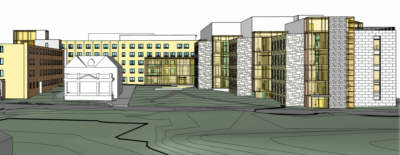
The Loyola Science Center is designed to house the programs, faculty, student. courses, and research laboratories currently associated with the mathematics, natural sciences, and computing sciences departments. In addition, it aims to invite the humanities into the sciences by joining the physical spaces occupied by faculty, students, and staff of the other departments in the College of Arts and Sciences.
A key aspect of the building design was to highlight science as a human endeavor. While a building may be filled with laboratory equipment or gadgets, the most powerful scientific tools at our disposal are the minds of our faculty and our students and the productive collaborations in which these minds engage. Thus, the building spaces are designed to foster these collaborations and promote "effective intellectual collisions" among all users of the building.
Thus, the building was designed based on the principles outlined in Project Kaleidoscope (PKAL), one of the leading advocates in designing, building, and sustaining undergraduate programs of excellence in the science, technology, engineering and mathematics (STEM) fields. PKAL is sponsored by the National Science Foundation and the W. M. Keck Foundation.
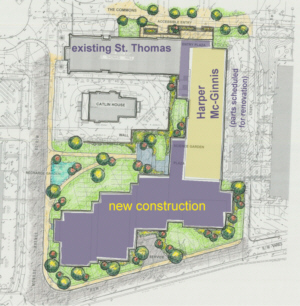
The illustration on the right shows an overview of the building site. The "existing St. Thomas" building (gray), which houses classrooms and humanities faculty, will remain as-is.
The "new construction" (purple) will include a major structure on the St. Thomas parking lot, as well as a new facade that will link the science center with the DeNaples Center/Dionne Green (see illustrations below)
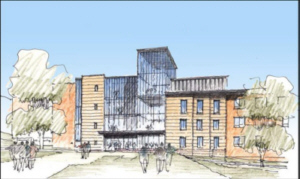

Portions of the existing Harper McGinnis wing (which currently houses some humanities and science departments) will be renovated to seamlessly integrate with the new construction.
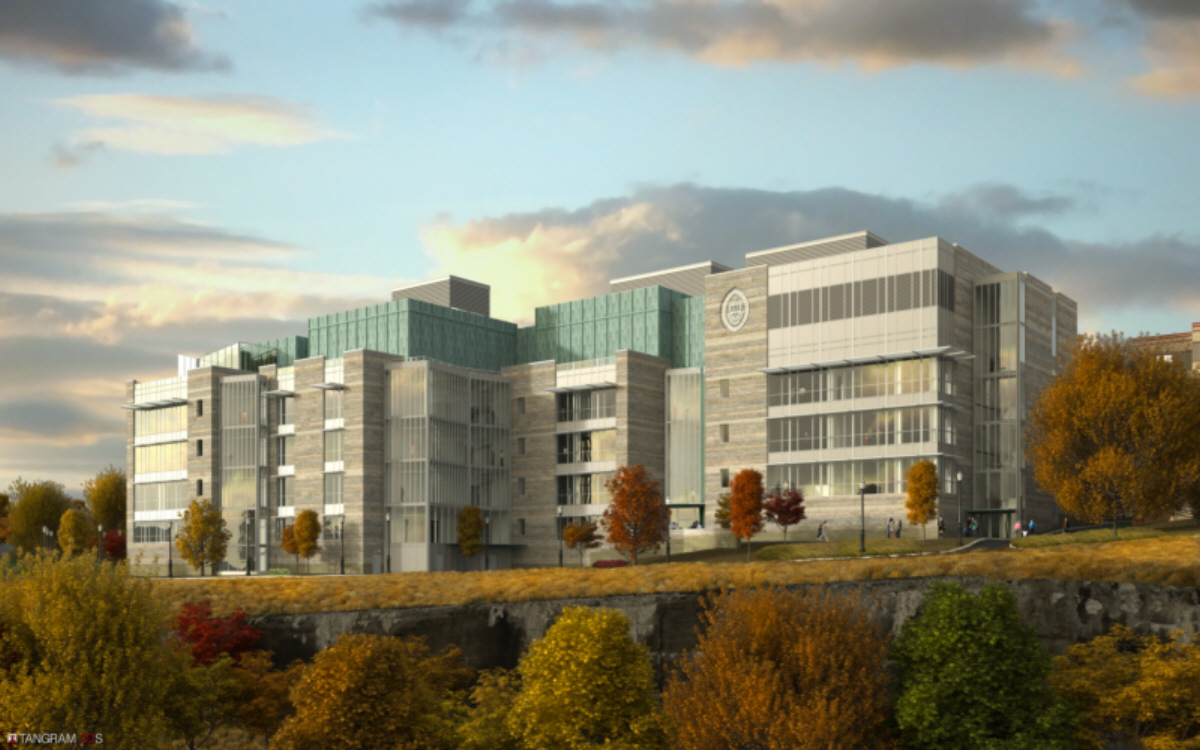
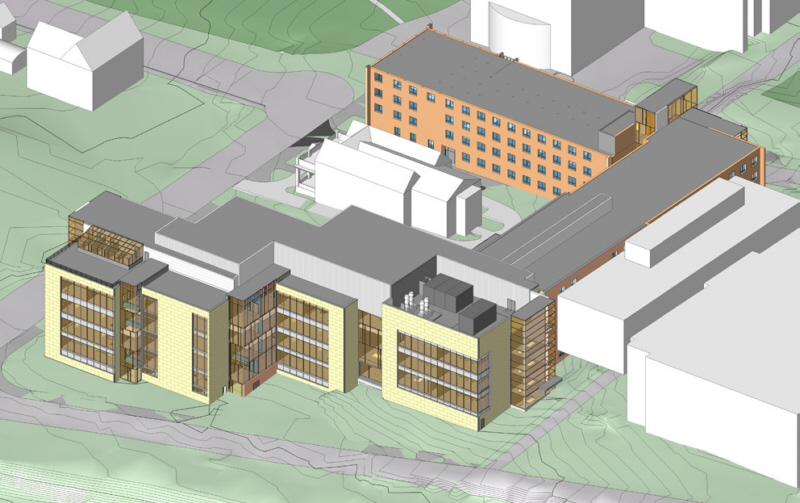
The south-facing side of the building is designed to serve as a welcoming face and a "beacon for the sciences" for anyone driving along the Central Scranton Expressway. The building will have numerous windows and views into the building.
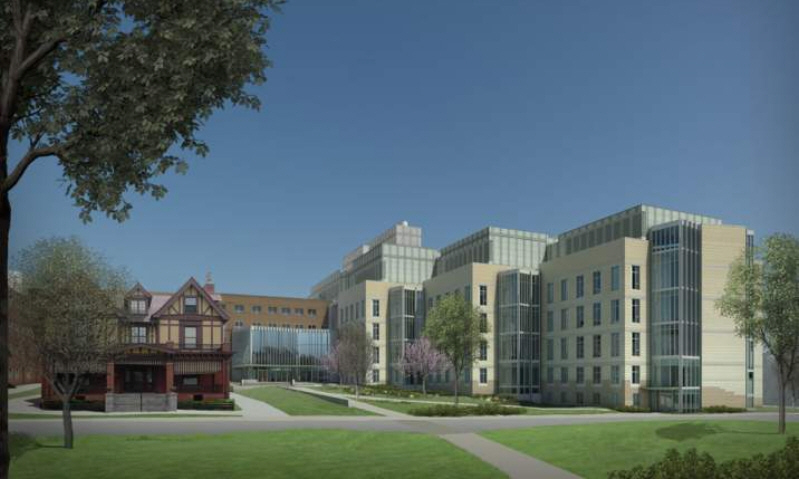
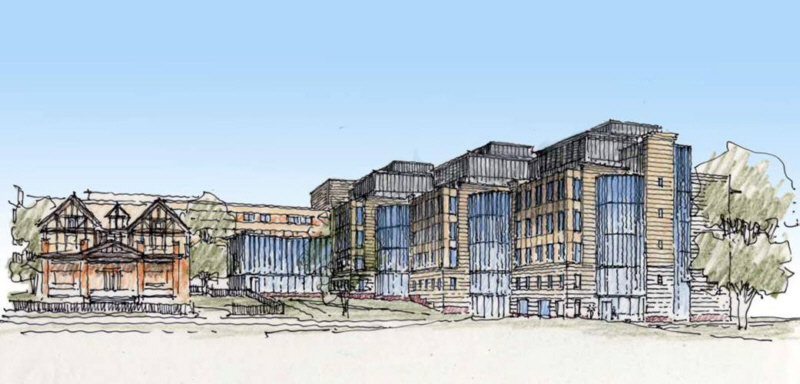
The building (above, left: shown with the Caitlin House removed for clarity) is designed to provide a welcoming face and atmosphere that will encourage all who pass by to enter and engage in the excitement of science here at our university.